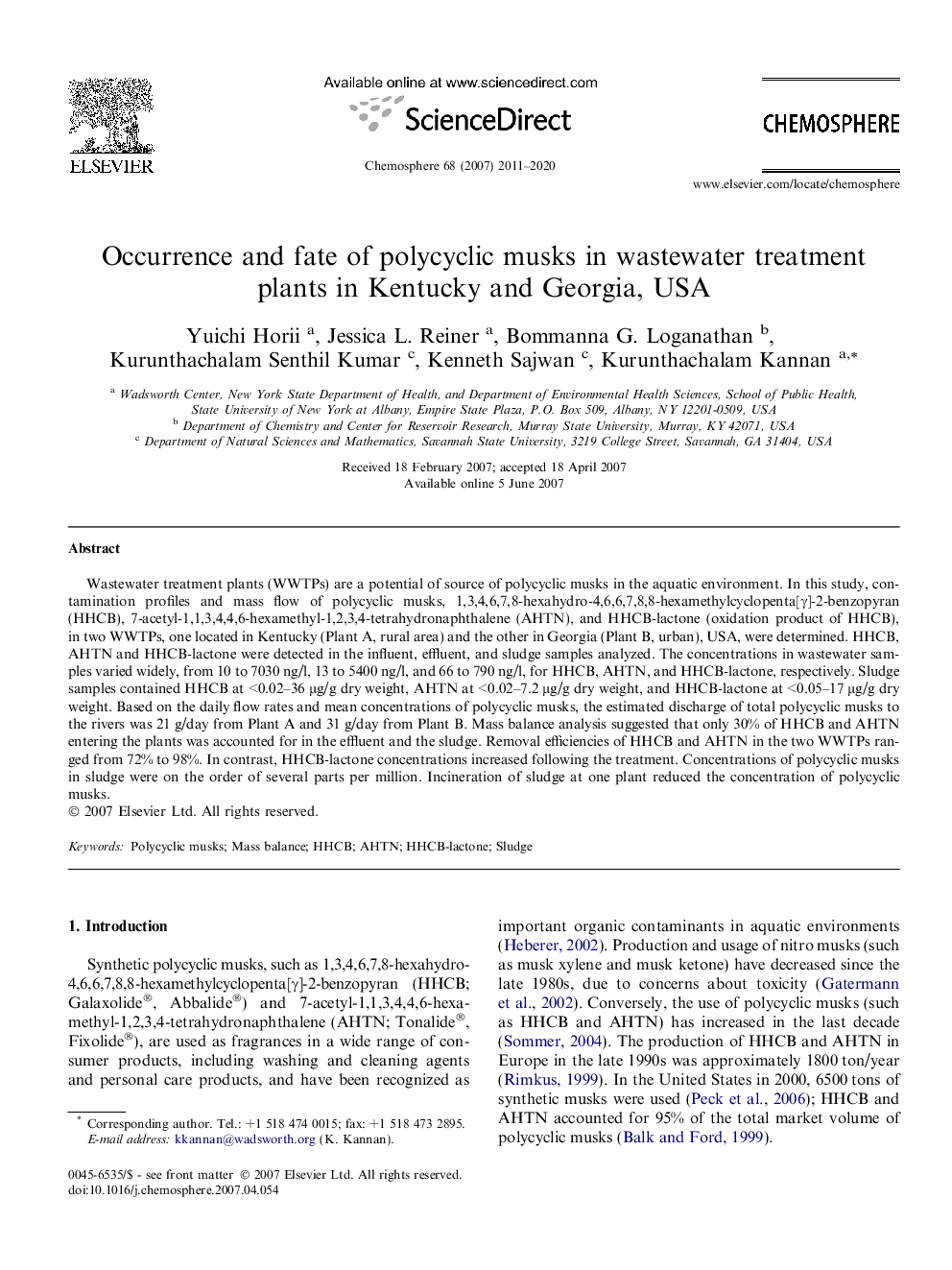| Article ID | Journal | Published Year | Pages | File Type |
|---|---|---|---|---|
| 4415346 | Chemosphere | 2011 | 10 Pages |
Wastewater treatment plants (WWTPs) are a potential of source of polycyclic musks in the aquatic environment. In this study, contamination profiles and mass flow of polycyclic musks, 1,3,4,6,7,8-hexahydro-4,6,6,7,8,8-hexamethylcyclopenta[γ]-2-benzopyran (HHCB), 7-acetyl-1,1,3,4,4,6-hexamethyl-1,2,3,4-tetrahydronaphthalene (AHTN), and HHCB-lactone (oxidation product of HHCB), in two WWTPs, one located in Kentucky (Plant A, rural area) and the other in Georgia (Plant B, urban), USA, were determined. HHCB, AHTN and HHCB-lactone were detected in the influent, effluent, and sludge samples analyzed. The concentrations in wastewater samples varied widely, from 10 to 7030 ng/l, 13 to 5400 ng/l, and 66 to 790 ng/l, for HHCB, AHTN, and HHCB-lactone, respectively. Sludge samples contained HHCB at <0.02–36 μg/g dry weight, AHTN at <0.02–7.2 μg/g dry weight, and HHCB-lactone at <0.05–17 μg/g dry weight. Based on the daily flow rates and mean concentrations of polycyclic musks, the estimated discharge of total polycyclic musks to the rivers was 21 g/day from Plant A and 31 g/day from Plant B. Mass balance analysis suggested that only 30% of HHCB and AHTN entering the plants was accounted for in the effluent and the sludge. Removal efficiencies of HHCB and AHTN in the two WWTPs ranged from 72% to 98%. In contrast, HHCB-lactone concentrations increased following the treatment. Concentrations of polycyclic musks in sludge were on the order of several parts per million. Incineration of sludge at one plant reduced the concentration of polycyclic musks.
